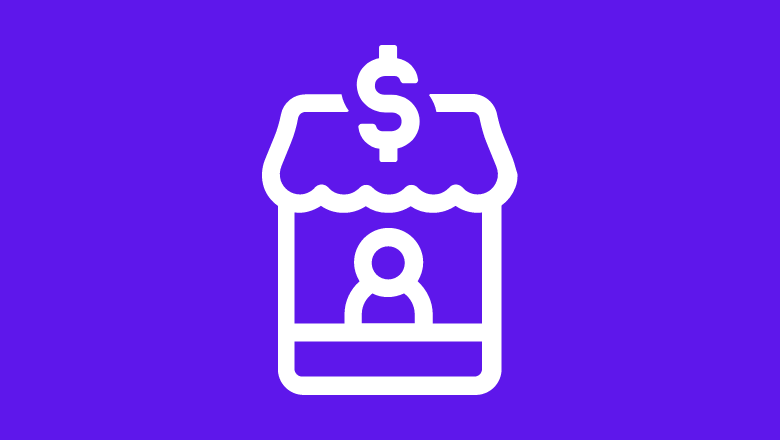As a business owner, you know that managing vendors can be a headache. With so many different vendors, keeping track of everything and ensuring you get the best possible value for your money can be challenging. That’s where a centralized Vendor Management Office (VMO) comes in.
But outsourcing comes with its own set of challenges. You must find the right vendors, manage relationships, maintain quality standards, and track performance metrics.
A Centralized Vendor Management Office (VMO) can help you overcome these challenges, standardize processes and drive performance improvement.
This blog post explains how a VMO can transform your outsourcing relationships.
- Section 1: Introduction about Centralized Vendor Management Office (VMO)
- Section 2: Benefits of a VMO
- Section 3: VMO structure
- Section 4: Vendor selection
- Section 5: Contract Management
- Section 6: Performance Management
- Section 7: Challenges of Centralized Vendor Management Office (VMO) Implementation
- Section 8: Wrapping Up about Centralized Vendor Management Office (VMO)
Section 1: Introduction about Centralized Vendor Management Office (VMO)
As your business grows, managing outsourcing relationships becomes increasingly complex. You might have different vendors for different services, and each vendor has its processes and procedures.
This can lead to consistency, duplication of effort, and inefficiencies. A VMO can help you streamline the outsourcing process, ensure consistency, and provide a centralized point of contact for all vendors.
By standardizing processes and procedures, a VMO can help you drive performance improvement and reduce costs.
Wrong opinion: We don’t need a VMO; we can manage outsourcing relationships independently.
While it is possible to manage outsourcing relationships without a VMO, doing so can lead to inefficiencies, inconsistencies, and reduced performance.
A VMO provides a centralized point of contact for all vendors, ensuring consistency in processes and procedures and providing clear lines of communication.
By having a dedicated team responsible for managing outsourcing relationships, you can ensure that all vendors meet the same standards and follow the same processes.
This can reduce costs, improve quality, and drive performance improvement.
Section 2: Benefits of a VMO

An essential benefit of a VMO is standardizing processes and procedures across all vendors. This can help you ensure consistency and reduce the risk of errors or inconsistencies.
A VMO can also help you track performance metrics, identify areas for improvement, and drive performance improvement. By having a centralized point of contact for all vendors, you can reduce the risk of miscommunications and misunderstandings.
Wrong opinion: Standardizing processes and procedures will stifle creativity and innovation.
While it is true that standardizing processes and procedures can reduce the scope for creativity and innovation, a VMO can strike a balance between standardization and flexibility.
By defining clear standards and practices, a VMO can help vendors understand what is expected of them and provide a baseline for performance metrics.
However, a VMO can also work with vendors to identify areas for improvement and encourage innovation. By providing a clear roadmap for vendors to follow, a VMO can help facilitate creation.
Section 3: VMO structure
A VMO can have different structures depending on the size and complexity of your business. Some companies have a dedicated VMO team, while others have a VMO manager who oversees outsourcing relationships.
Depending on your organizational structure, a VMO can also be centralized or decentralized. A centralized VMO has all vendors reporting to a single point of contact, while a decentralized VMO has different contact points for other vendors.
Wrong opinion: A decentralized VMO is better because it provides more flexibility.
While a decentralized VMO can provide more flexibility, it can lead to inconsistencies and inefficiencies. A centralized VMO provides a single point of contact for all vendors, ensuring consistency in processes and procedures.
By having all vendors report to a single point of contact, a centralized VMO can also reduce the risk of miscommunications and misunderstandings. This can help improve quality, reduce costs, and drive performance improvement.
Section 4: Vendor selection

Vendor selection is an integral part of any outsourcing relationship. After identifying the exemplary service or product to outsource, the next step is to choose the right vendor.
Selecting a vendor that meets the company’s needs and requirements is crucial. In choosing a vendor, the following factors should be taken into consideration:
- Expertise and Experience: The vendor should possess the required skills and experience to perform the work. Check the vendor’s portfolio and references to see their experience in the industry.
- Reputation: It is essential to research the vendor’s standing in the market. Check online reviews, references, and ratings.
- Cost: Although cost should not be the only factor to consider, it is essential. The vendor should provide a competitive price without compromising the quality of the work.
- Technology: Technology is an important consideration when choosing a vendor. The vendor should have the necessary technology and software to perform the work.
Wrong opinion: “The cheapest vendor is always the best option.”
Practical solution: Choosing a vendor based solely on cost is a common mistake that can lead to poor quality work, delays, and additional charges. Although price is essential, it should not be the only consideration.
It is crucial to consider the vendor’s experience, expertise, and reputation to ensure the best quality work.
When selecting a vendor, choosing a vendor that will meet the company’s needs and provide a high-quality product or service is vital.
Having a good working relationship with the vendor is also essential, as this can help ensure a successful outsourcing relationship.
Section 5: Contract Management
Once a vendor has been selected, the focus turns to manage the vendor’s contractual relationship. A well-drafted contract that includes all the essential terms and conditions of the relationship is crucial.
The contract should clearly outline the vendor’s obligations, as well as the expectations of the company.
In addition to having a well-drafted contract, it is also essential to actively manage the agreement throughout the relationship.
This means monitoring vendor performance to ensure that they are meeting their obligations and addressing any issues that arise during the relationship.
One common misconception around contract management is that it can be revisited once the contract is signed. However, the reality is that a well-managed agreement requires ongoing attention and maintenance to ensure that the relationship remains mutually beneficial.
It is essential to regularly review the contract to ensure that the terms remain relevant and up-to-date and to identify any areas for improvement. This can include updating pricing structures or adjusting service levels as needed.
Wrong Opinion: Once a contract is signed, there’s no need to revisit it.
Effective Answer: While a well-drafted contract is essential, it’s only the beginning. Contract management requires ongoing attention and maintenance to ensure the relationship remains mutually beneficial.
Regularly reviewing the agreement to ensure the terms stay relevant and up-to-date is critical to the relationship’s success.
Section 6: Performance Management

Once a vendor is under contract, it is essential to monitor their performance to ensure that they meet the agreed-upon service levels. This includes tracking key performance indicators (KPIs) and conducting regular performance reviews.
Regular performance reviews provide an opportunity to evaluate the vendor’s performance and identify areas for improvement.
This can include reviewing the vendor’s progress against established KPIs and discussing any issues or concerns that have arisen during the relationship.
It is also essential to provide regular feedback to the vendor throughout the relationship. This includes acknowledging good performance and addressing any areas where improvement is needed.
Wrong Opinion: Once a vendor is under contract, there’s no need to monitor their performance.
Effective Answer: Monitoring a vendor’s performance is critical to ensuring they meet the agreed-upon service levels. This includes tracking KPIs and conducting regular performance reviews.
Providing regular feedback to the vendor throughout the relationship is also vital to ensure that they understand the company’s expectations and identify improvement areas.
Section 7: Challenges of Centralized Vendor Management Office (VMO) Implementation

Implementing a VMO can be challenging, as it requires buy-in and support from all levels of the organization.
One common challenge is resistance from business units that are used to working directly with vendors. These units may view the VMO as an unnecessary layer of bureaucracy that slows the procurement process.
Another challenge can be resistance from vendors who may view the VMO as a threat to their existing relationships with the company.
It is vital to communicate the benefits of the VMO to both internal stakeholders and vendors and to involve them in the implementation process to ensure their buy-in and support.
Effective change management is also critical to the success of VMO implementation. This includes communicating the purpose and benefits of the VMO and providing training and support to stakeholders throughout the implementation process.
Wrong Opinion: Implementing a VMO is a simple process.
Effective Answer: Implementing a VMO can be challenging, as it requires buy-in and support from all levels of the organization. Resistance from business units and vendors is common, and effective change management is critical to the success of the implementation.
Clear communication of the purpose and benefits of the VMO, as well as providing training and support to stakeholders, can help overcome these challenges.
Section 8: Wrapping Up about Centralized Vendor Management Office (VMO)
In conclusion, managing outsourcing relationships can be a challenging task. There are many moving parts; keeping them all coordinated can be a full-time job.
By setting up a centralized Vendor Management Office (VMO), companies can streamline their outsourcing relationships, standardize their processes, and drive performance improvement.
A well-run VMO can deliver significant organizational benefits, including cost savings, improved supplier performance, and reduced risk.
In this post, we’ve discussed the benefits of a centralized VMO and looked at best practices for setting one up.
We’ve explored the various stages of the outsourcing process, from vendor selection to relationship management. We’ve examined some of the organizations’ common challenges when managing outsourcing relationships.
Remember, setting up a VMO is not a quick fix but a long-term investment in your organization’s outsourcing strategy. It requires careful planning, effective communication, and ongoing commitment.
In summary, a centralized VMO can help your organization achieve its outsourcing goals by improving supplier performance, reducing costs, and minimizing risk.
By implementing the best practices outlined in this post, you can set up a VMO that works for your organization and delivers real value to your business. So, take the time to plan, communicate, collaborate with your suppliers, and reap the benefits of a well-run VMO.
Still not sure if a centralized vendor management office (VMO) is for you. Contact us to learn more.


